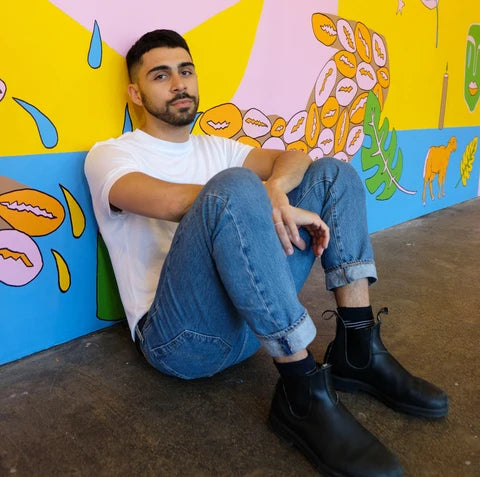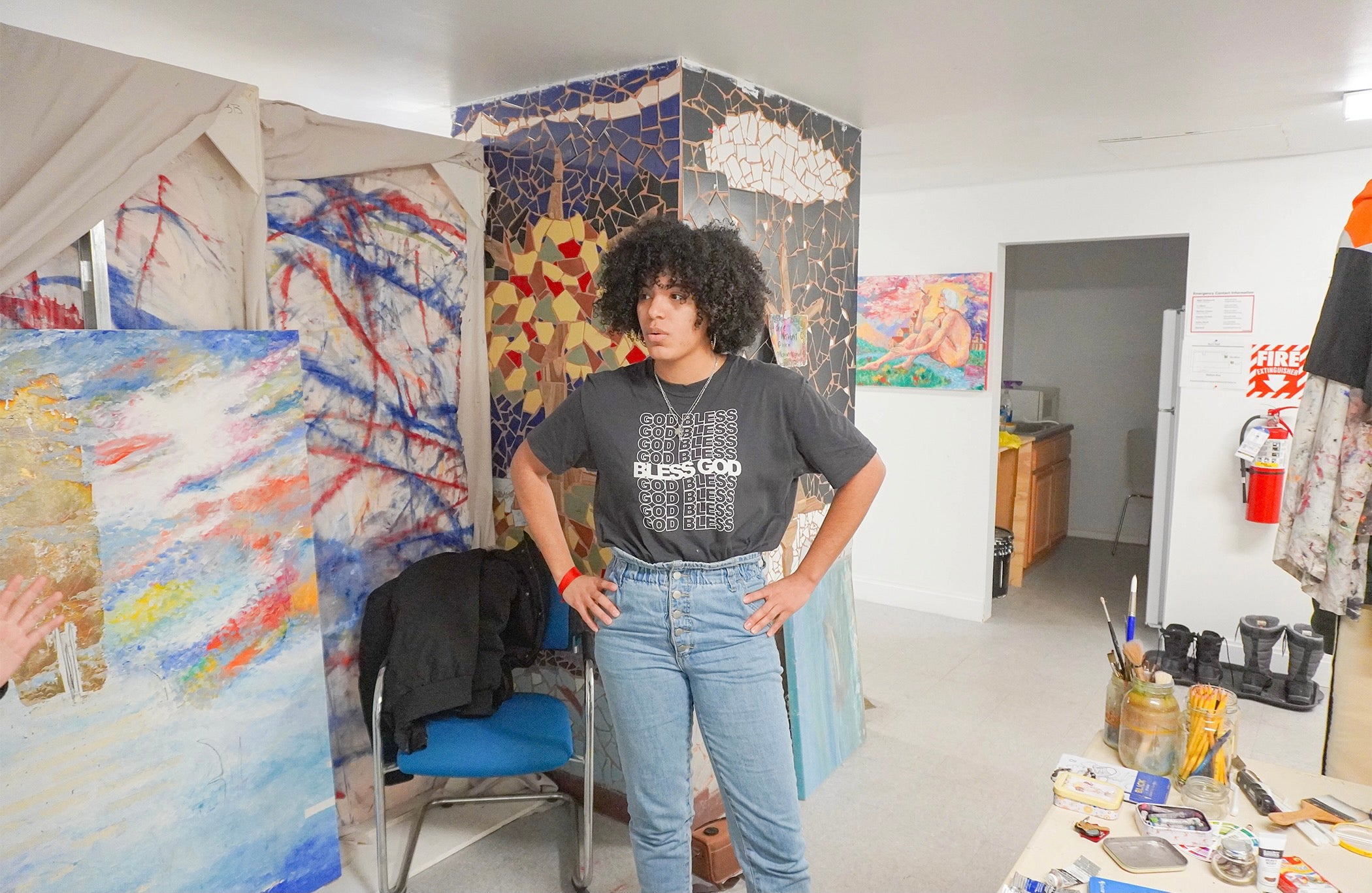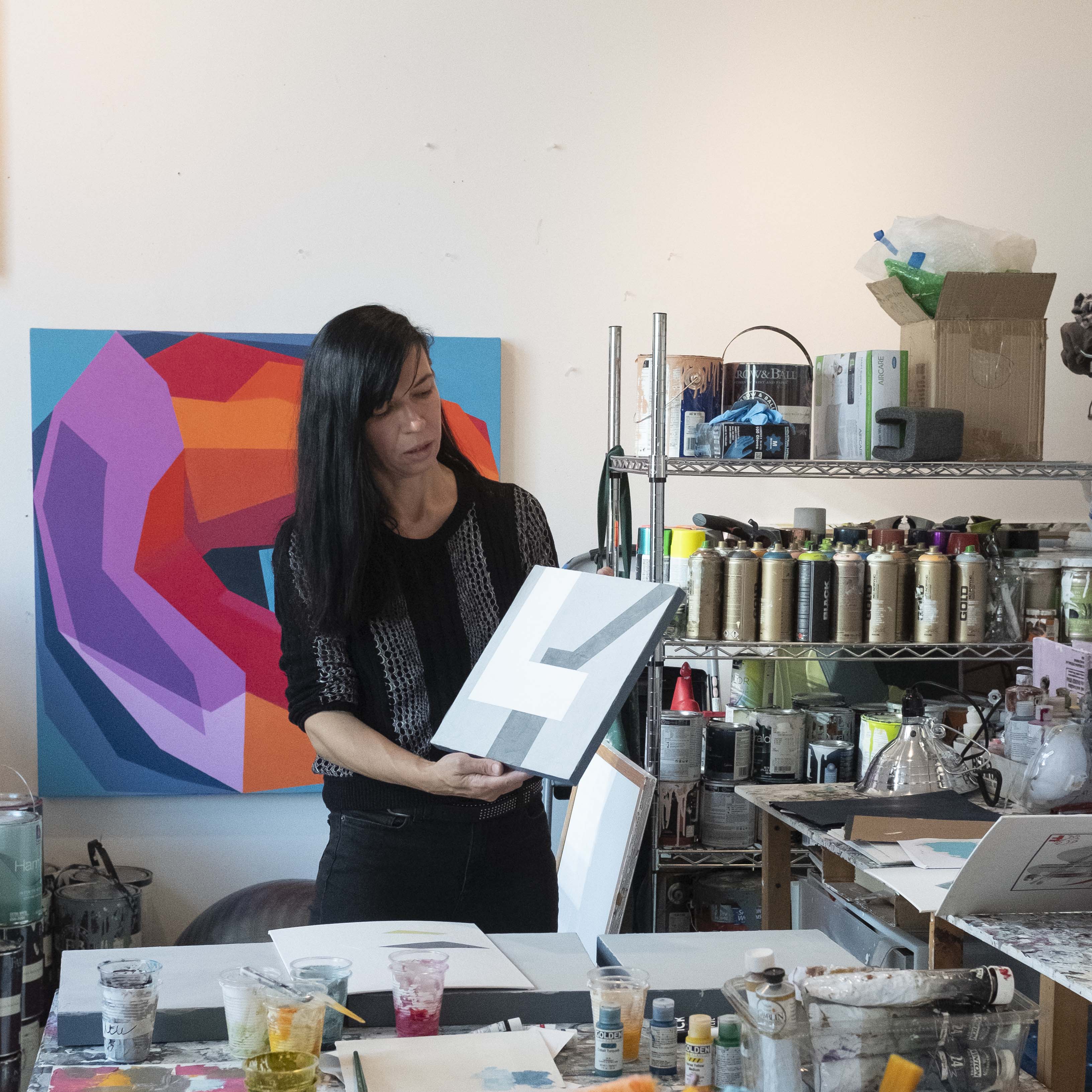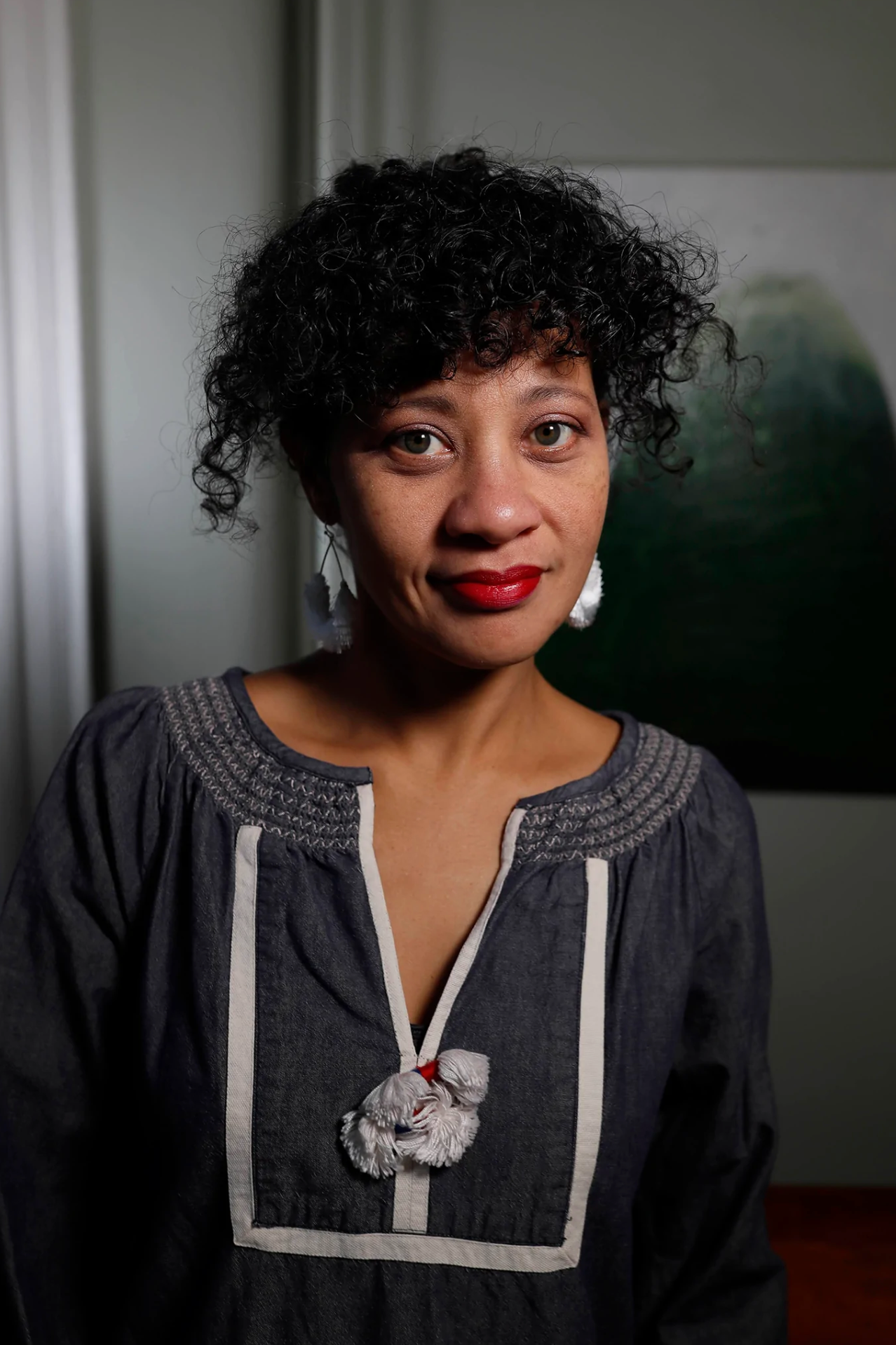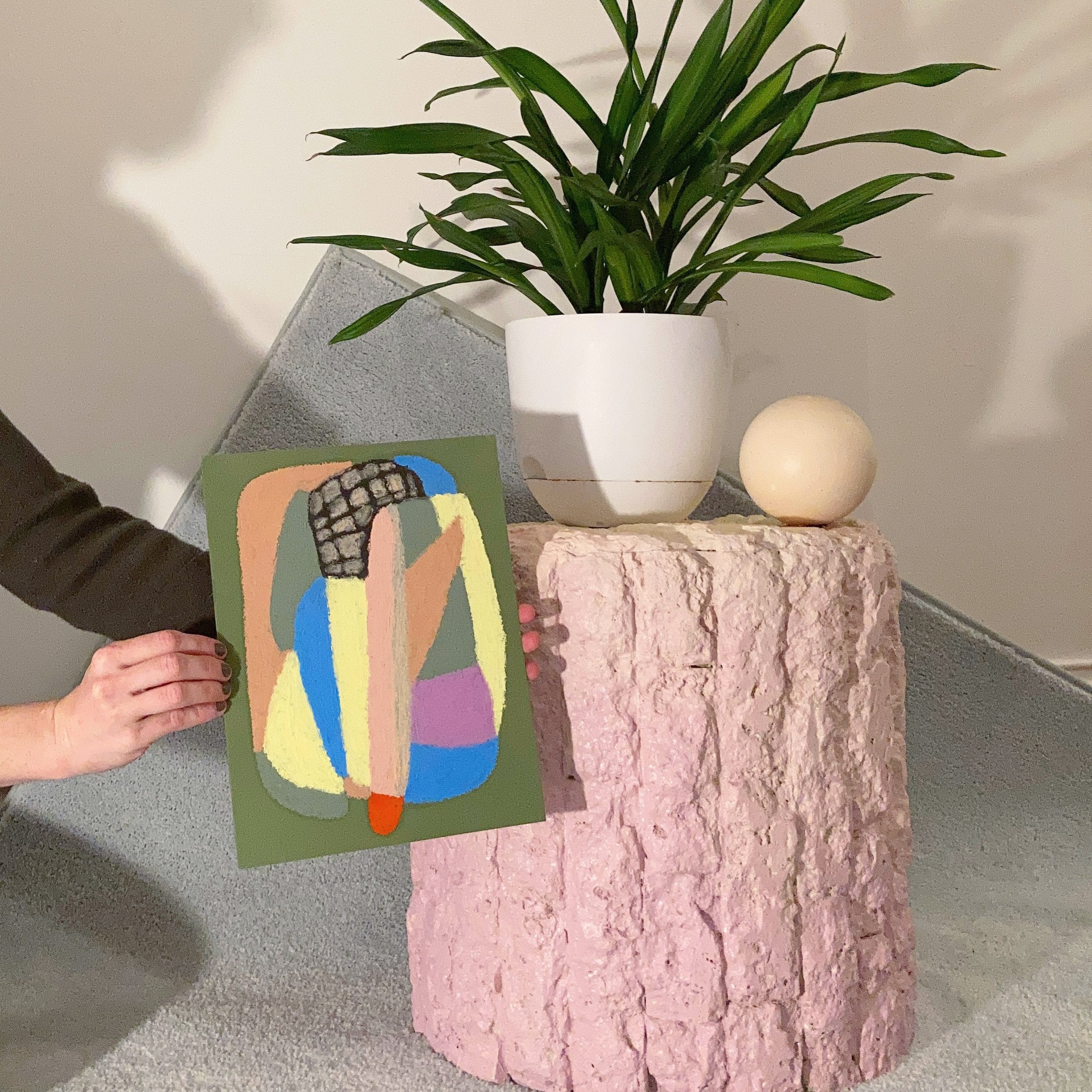No Products in the Cart
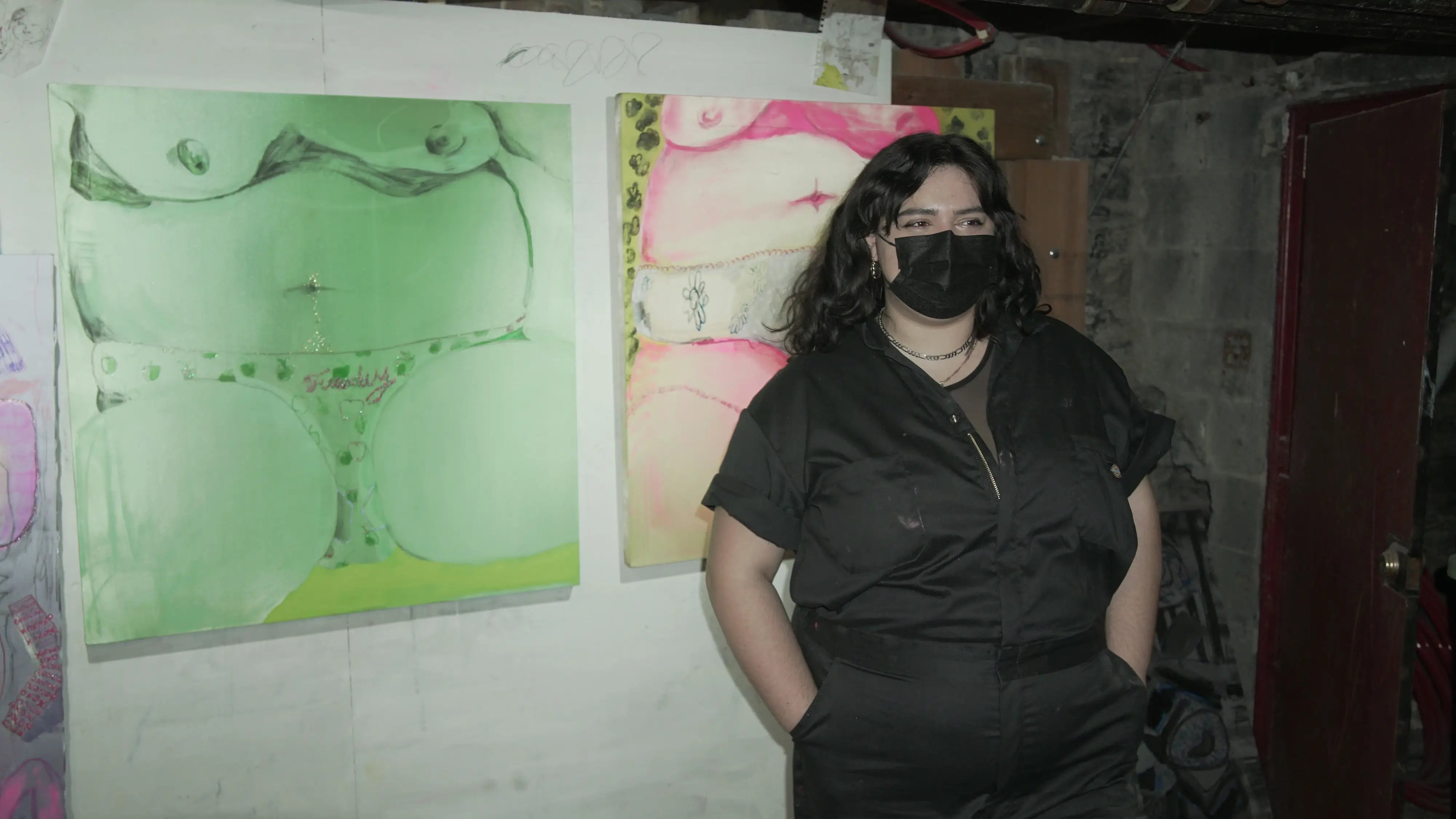
In which we enter Gabriella's basement studio through a tattoo parlor and realize that's the perfect appetizer for the fleshy paintings coming alive inside. We agree on the intellectual chemistry of a Virgo and a Gemini (guess which one is Gabriella).

Gabriella Moreno, *open*
I found that there were different eras of your works- the earlier ones were in views of bodies in that way that is a little more abstract and detailed whereas the recent ones are more like whole human bodies.
In those earlier works- the more handcrafted images, the abstract images- I was thinking about the body in the digital sphere and how we fragment the female form or the sexual form. I’m really using the line and the form of the body as the structure in which I can play with. So going into a body as a whole, using that as a composition… like the form of a leg, how can the thigh become abstracted? Because we're constantly abstracting and cropping our own bodies in the pictures we take of ourselves or in the media that we ingest.
Gabriella Moreno, Sometime in August
When I started making full figure pieces I was really concerned about my own visible space that I was holding and the weight of a body, rather than just the image of a body itself. A lot of them are of me looking at me, or, me through my eyes, which references the art historical concept of the gaze. The full form was important because it brings it into a room or an area of intimacy rather than flattened up against the picture plane. When you're cropping you're pointing towards something specific - there's a power in that. All of my work is oscillating around the idea of power dynamics and who is looking at who.

One of Gabriella's works in progress is a self portrait of herself getting ready for her first kink party, biting her arm being both nervous and excited.
In those self portraits you mentioned, how do you relate to yourself in a different way other than in everyday life?
I think a lot about the perception of the female. As a woman you're constantly looking at yourself. We're raised in this weird society where we're conditioned to constantly be vigilant and know how we are posited next to the other person in the room or on the street. It's hard to say- it's like the chicken and the egg- have I always been watching myself or does the work inform me in different ways?
Through my work I try to take that agency in how I see myself instead of seeing myself through the patriarchal lens that we're conditioned to adopt. It's an empowering form. It's like taking back the idea of being looked at as a woman. Now I am the one looking.

Is that where your titles come from too? A lot of your portraits have conversational titles.
Sometimes it's things that people have said to me, things that men have said to me, things that family members have said to me. Sometimes they're lyrics of songs- I listen to music constantly- it's kind of a culmination of all of these elements. It's really like diary entries. There's no filter, no compartmentalization of anything. Everything is in this 360 more than meets the eye inside outside scope.
It feels like even when you're painting bodies you're feeling with it. There's a sense in your hands, that gut thing that you're trying to get out.
I like this idea of the sense, the sensorial, playing with the senses, and I want that to come through with my viewer. Does something feel hairy or hot, or pulsing? These are things that I'm thinking and working through.
Gabriella Moreno, Reading Bell Hooks During Cancer Season
WORKS BY THE ARTIST
When did you start working on silk and satin, and has it changed the way you work?
I came to the material cause somebody recommended it to me. I do these crit groups and I was doing charcoal drawings on really heavy, raw canvas. And it was just so heavy; the content was heavy and the lines were heavy and the material was heavy, so the silk and satin came through as a means to bring a fluid or more dreamlike element to the work. It lightened it up, literally, because the content is still heavy and my mark making hasn't changed much but the way those things meet the surface shifts the way that people interact with the work.
I also like the idea that the satin or the silk could actually be the skin of the figures, or the lingerie that the figures are wearing or even just the sheets on the bed. Which is funny because during quarantine it was hard for me to get here [the studio] at first. I was taking my silk and satin bed sheets that I was sleeping on and stretching them my roof and painting on them.
I like that it's not necessarily traditional material, which is another thing that comes up when I'm using puffy paint and glitter glue. This idea of high and low at the same time is a little bit of a retort to art history and academia and the institutionalization of the art world. The notion of oil paint on canvas being the pinnacle or art history and then cartoons or line drawings being the bottom is a scale I like to play with cause I don't believe in it.

Detail of Gabriella Moreno, Reading Bell Hooks During Cancer Season
The series of plantains- what made you paint plantains? Is there a metaphor about the body or is it an object you found formally interesting?
Both. I am second generation Cuban and my great grandfather worked as a foreman on a plantation farm in Cuba. But a lot of my upbringing was super whitewashed. I grew up in a very white town about 30 miles outside of the city. A lot of my relationship to my culture shifted, so as I've been getting older I've been trying to reconnect with my ethnicity and my family.
So plantains started as a nod to my Cuban culture but they're also super phallic. I'm using plantains in this way that relates to the body as a way to point at the phallus and then to crop it. Also to control the way that the phallus moves… to see how it can form into more of a vaginal shape. They're also just like, silly bananas. I like the idea that something can be two things at once. Humor is pretty important when you're discussing heavy emotional things.
I would also like to see the new things, whether that be themes or materials, that you're working with.
This one's definitely in progress. It's mostly just a graphic drawing right now but I'm incorporating this puffy paint and glitter glue.

I like these materials because they're things that I learned how to use when I was a kid. I'm realizing more and more of my work is about being this awkward tween but also being in a woman's body.
Also, they’re accessible and easy to use - they give me the most direct line. When I'm working I just want to be able to pick something up and put it on. I don't want to have to mix. To me it's about how I can get the most direct image out.
So these materials are entry points for my childhood memories but also pragmatic in the sense that I can be fast with them.
I'm thinking about painting in a non gatekeeping way. If my six year old niece was looking at these could I describe to her what the materials are without her being confused. I like that idea that these are easy to access. It reminds me of writing in a diary. When you're younger and writing in your diary everything is so romantic but you're using a fluffy pen... it's silly but you're bought into that moment. My work is a lot about buying into the moment in that way.

I also saw some curatorial projects on your website. What was your experience like, were there any unexpected takeaways?
Always. I run this curatorial project with my good friend from undergrad who is an art therapist. Our disciplines are very different but we have a lot of similar interests as far as art making goes. It's one way that she and I meet and we can massage out ideas that are not necessarily part of our personal practices.
Typically we do one night only shows in non traditional gallery settings. Obviously quarantine stopped a lot of those projects. We’ve done one digital show in the School of Visual Arts, which is where we both got our undergraduate degrees from. The shift to the digital was really hard for us since I'm such a tactile person, so trying to curate in a space that doesn't exist was really freaky for us. But these shows are always an amazing way to meet other artists and talk about their studio practices. It's an organic process for us.

And you brought up having to adjust a little bit because of quarantine and having to operate around the house a little more than usual. Has working indoors changed the way you work at all?
For sure. I felt bad for my roommates at first because I was still trying to make these huge pieces and just didn't have the room for it. It was difficult for me.
Getting back into the studio physically has been so helpful. I am the subject in a lot of these and even if there is no figure - the work is about me and my emotions. So this cathartic process has been a great coping mechanism for me during quarantine.
It's weird because the work is about me interacting with the world and the way I'm actually interacting with the world is so different now. There is a slowing down that's happened, a shift in pace in how I'm making which is hard for me to admit because I like to make work really fast. But it's teaching me a lot of things; it's slowing me down so I can see other things that I wouldn't normally see. I get to spend more time with each piece.





